![]() For 22 years JBHE has collected Black student admissions data on the highest-ranked liberal arts colleges. Over this long period, there have been nine years when Amherst College in Massachusetts reported the highest percentage of Black first-year students. In fact, Amherst has led the rankings for the seven of the past eight years. On six occasions, Wesleyan University in Middletown, Connecticut, had enrolled the highest percentage of Black first-year students. Williams College has also been a consistent performer in attracting a large group of Black first-year students and has consistently been at or near the top of the rankings.
For 22 years JBHE has collected Black student admissions data on the highest-ranked liberal arts colleges. Over this long period, there have been nine years when Amherst College in Massachusetts reported the highest percentage of Black first-year students. In fact, Amherst has led the rankings for the seven of the past eight years. On six occasions, Wesleyan University in Middletown, Connecticut, had enrolled the highest percentage of Black first-year students. Williams College has also been a consistent performer in attracting a large group of Black first-year students and has consistently been at or near the top of the rankings.
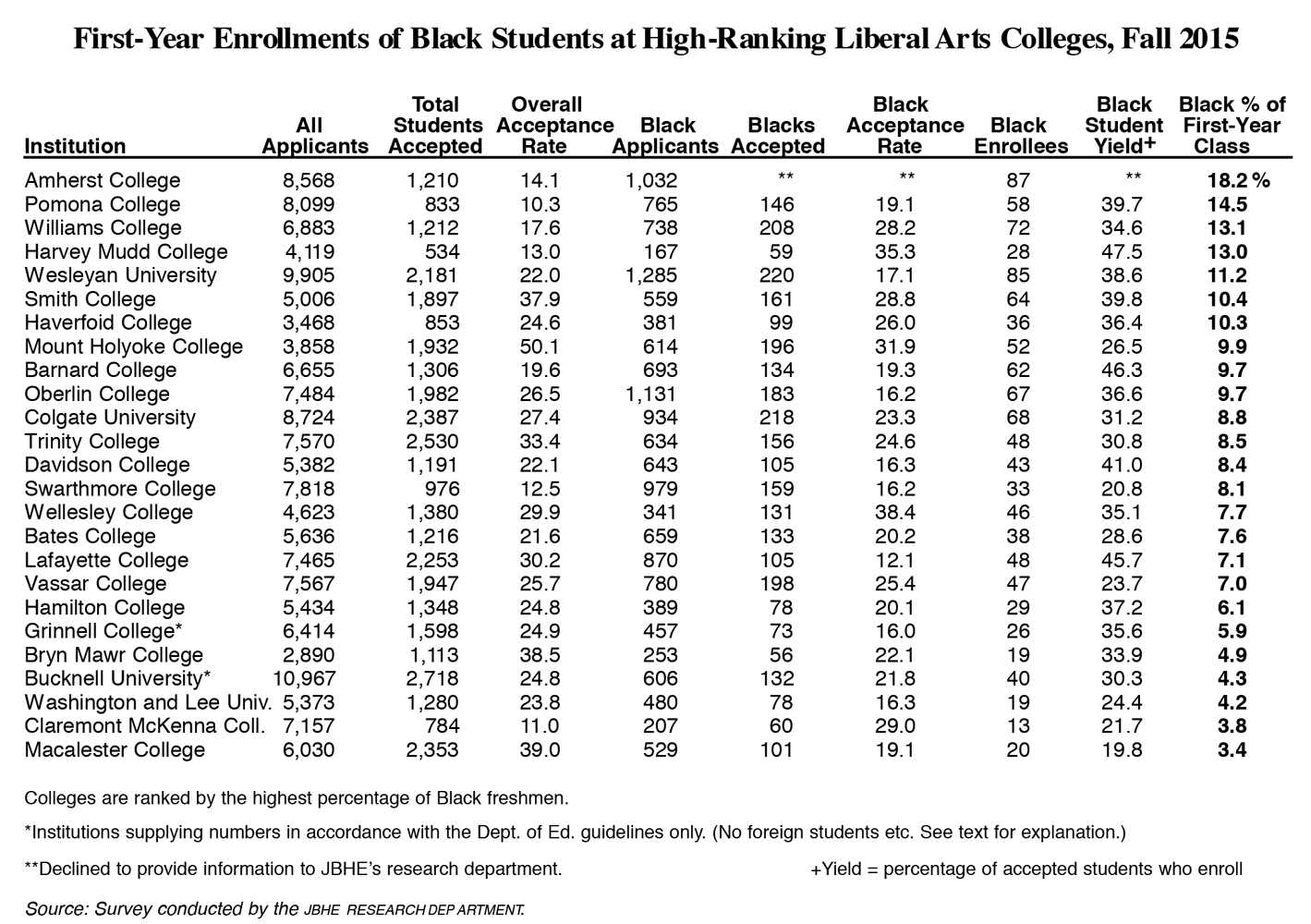
This year, Amherst College once again holds the top spot in our survey. There are 87 Black first-year students at Amherst this fall. They make up a whopping 18.2 percent of the first-year class. This is largest percentage of Black first-year students at any of the high-ranking liberal arts colleges in the 22 years that JBHE has conducted this survey. A year ago, there were 74 Black first-year students at Amherst. They made up 15.8 percent of the entering class. Three years ago, Amherst dropped to fourth place in our survey with an entering class that was 10.3 percent Black.
As was the case last year, Pomona College in Claremont, California, ranked second in our survey. There are 58 Black first-year students at Pomona. They make up 14.5 percent of the entering class. A year ago, Blacks were 13.2 percent of the entering class. Two years ago, Black students made up only 8.8 percent of the entering class at Pomona.
As stated, Williams College has been a consistent performer and this year is no exception. There are 72 Black first-year students making up 13.1 percent of the entering class, placing Williams in third place in our survey. A year ago there were 55 Black first-year students at Williams.
Harvey Mudd College in Claremont, California, bills itself as the nation’s top liberal arts college of engineering, science and mathematics. Thus, it may be a surprise to many readers, that Harvey Mudd College ranks fourth in our survey this year with an entering class that is 13 percent Black. The 28 Black first-year students are more than double the number from a year ago. In 2009, Harvey Mudd College ranked last in our survey in the Black percentage of first-year students. That year there were only three black students in the entering class. They made up just 1.4 percent of all entering students. This is amazing progress in a short time, from 1.4 percent of all entering students in 2009 to 13.0 this year.
Wesleyan University, which as stated, has led our rankings on six occasions including three years ago, ranks fifth in this year’s survey. There are 85 Black first-year students at Wesleyan this year and they make up 11.2 percent of the entering class. Three years ago when Wesleyan led the rankings, Blacks were 11.3 percent of the entering class.
There are three women’s colleges that rank in the top 10 of our survey. Smith College in Northampton, Massachusetts, ranks in sixth place with an entering class that is 10.4 percent Black. In eighth place is Mount Holyoke College where 9.9 percent of all entering students are Black.
Last year, Barnard College in New York City had 74 Black women students in its entering class. They made up 12 percent of all incoming students. This put Barnard in third place in last year’s survey. This year, Barnard drops to ninth place with an entering class that is 9.7 percent Black.
Haverford College in Pennsylvania and Oberlin College in Ohio, a liberal arts institution with a long history of providing educational opportunities for African Americans, also ranked in the top 10 of our survey.
Here is one very encouraging statistic: In 2009, only three of the nation’s high-ranking liberal arts colleges had entering classes that were at least 10 percent Black. This year there are seven. Another three major liberal arts colleges this year have entering classes that are 9.7 percent to 9.9 percent Black.
A Note on Methodology
Before we continue with the results, it is important to mention how the U.S. Department of Education collects data on the race of undergraduates. Before a change was made several years ago, students who reported more than one race (including African American) were included in the figures for Black students. This is no longer the case. Thus, students who self-identify as biracial or multiracial with some level of African heritage are no longer classified as Black by the Department of Education.
JBHE surveys have always asked respondents to include all students who self-identify as having African American or African heritage including those who are actually from Africa. JBHE has always maintained that biracial, multiracial, and Black students from Africa add to the diversity of a college campus. And including these students in our figures offers college-bound Black students a better idea of what they can expect at a given college or university. In order that we can compare our current data to past JBHE surveys we have continued to asked colleges and universities to include all students who identify themselves as having African American or African heritage.
Some of our responding liberal arts chose to report results that correspond with official Department of Education figures. They are indicated on the main table with an asterisk. It should be noted that if biracial, multiracial, and Black foreign students were included in the Black percentage of students in the first-year classes at these institutions, the overall percentage of Black students would undoubtedly be higher.
Liberal Arts Colleges: Short-Term Gainers
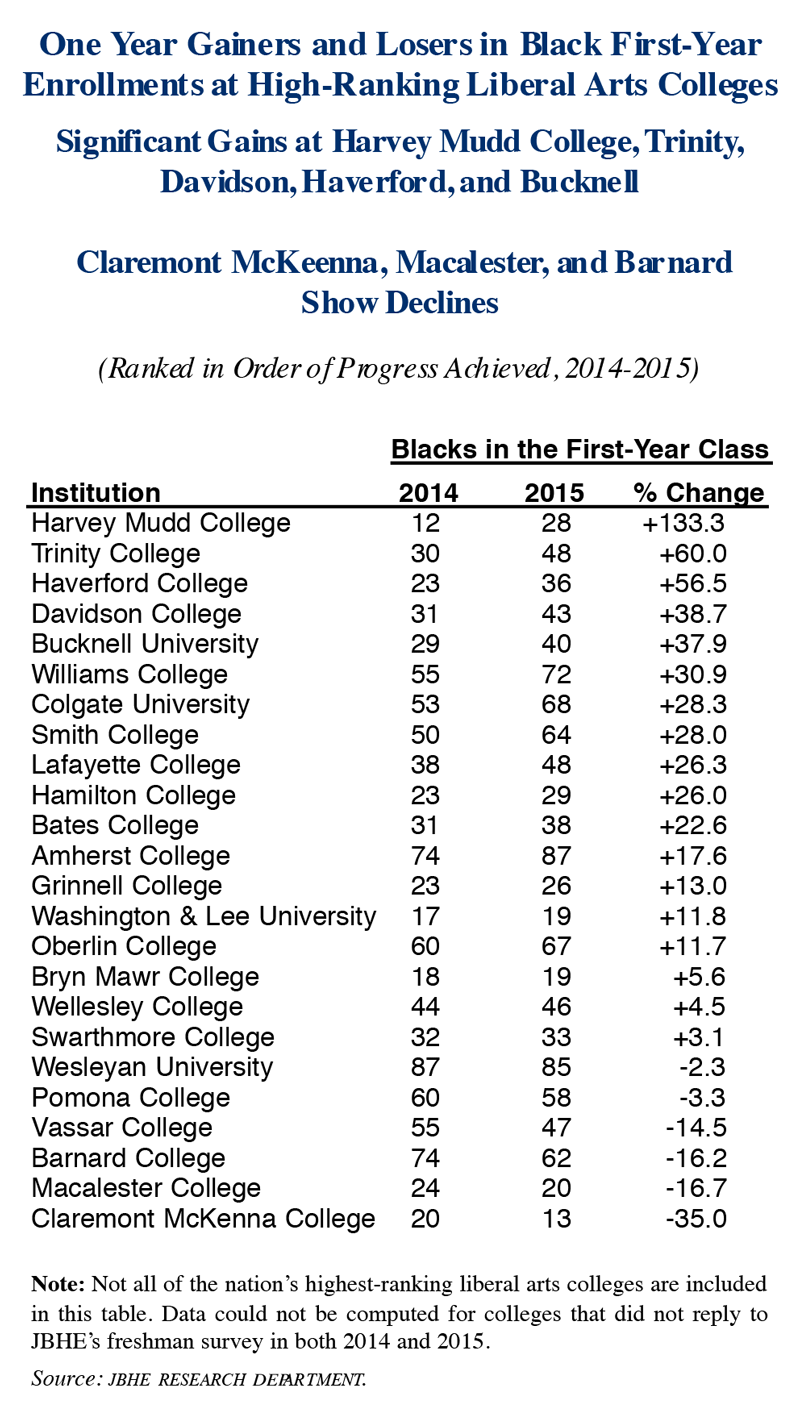
Now we turn to a comparison of this year’s results with the data from last year. For the 24 colleges for which we have data in both 2014 and 2015, 18 colleges posted gains over last year in Black enrollments. Only six college colleges showed a decline. Last year, only 10 liberal arts college reported an increase in the number of entering Black students from the previous year.
Due to the stellar performance noted above, it is no surprise that Harvey Mudd College had the largest percentage increase in Black first-year students. Trinity College in Connecticut and Haverford College in Pennsylvania, both posted gains of more than 50 percent from a year ago. Davidson College in North Carolina, Bucknell University in Lewisburg, Pennsylvania, and Williams College in Massachusetts all posted gains in excess of 30 percent. Colgate University and Hamilton College in New York, Smith College in Massachusetts, Lafayette College in Easton, Pennsylvania, and Bates College in Lewiston, Maine, posted gains in Black first-year students of more than 20 percent.
Leading liberal arts colleges that showed significant declines in Black first-year students were Vassar College in Poughkeepsie, New York, Barnard College in New York City, Macalester College in St. Paul, Minnesota, and Claremont McKenna College in Claremont, California.
Black Acceptance Rates at Liberal Arts Colleges
Acceptance rate data is a closely guarded secret at many high-ranking universities. But most of the nation’s leading liberal arts colleges are willing to disclose this information. This year, Amherst College, which had the highest percentage of Black first-year students, was the only high-ranking liberal arts college that declined to provide its Black student acceptance rate.
Three years ago, for the first time in the history of the JBHE survey of liberal arts colleges, more responding colleges had a lower acceptance rate for Black students than their overall acceptance rate compared to the number of colleges that had a Black acceptance rate that was higher than their overall rate. This was true again in 2013 and 2014. This makes the fourth year in a row when more liberals arts college showed a lower acceptance rate for Black students than the acceptance rate for students overall. In fact, the trend has accelerated. This year, only seven high-ranking liberal arts colleges had a Black student acceptance rate that was higher than for the overall applicant pool. Last year there were nine. Many of these liberal arts colleges that had a high Black student acceptance rate were among the colleges that had the highest percentage of Blacks in their entering class.
While no firm conclusions can be made, the fact that for the past four years there are now more colleges with overall acceptance rates that are higher than Black acceptance rates, causes one to wonder if there has been some curtailment in colleges’ consideration of race in admissions decisions.
At the liberal arts colleges where the Black student acceptance rate was lower than the rate for all students, the differences were substantial at some institutions. For example, at Macalester College in Minnesota, 39 percent of all students were accepted but only 19.1 percent of Black students were admitted. At Lafayette College, 30 percent of all applicants were admitted but only 12.1 percent of Black applicants.
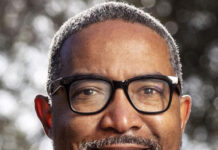
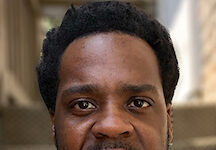
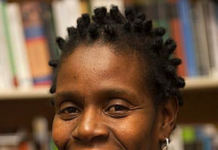


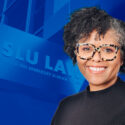





Now, about the graduation rate, and specifically the four year graduation rate. I know, we look at six years, but what about getting out in four years with a degree.
The survey completed in 2006 included the Ivy League institutions. This one does not. Does a survey with that information exist?
The Ivy League schools are in our annual surveys of nation research universities. You can see the latest of these surveys here.
Thanks for the yearly surveys. I noticed, however, that for the consecutive last three surveys Colby college has not been included. Do you know why?